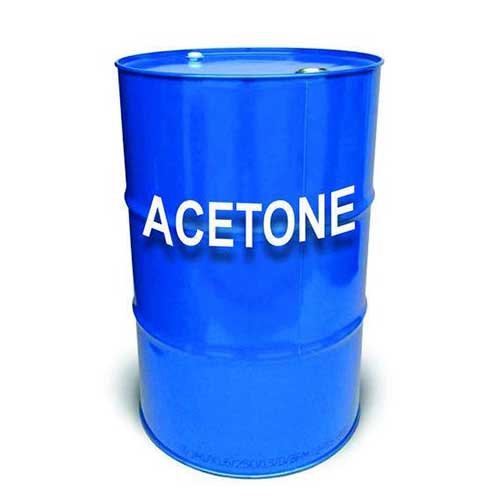ACETONE C3H6O
ABOUT:
Acetone is also called dimethyl ketone, 2-propanone, and beta-ketopropane. Acetone is typically produced through the oxidation of isopropyl alcohol. The most common industrial process for producing acetone is the cumene process, which involves the reaction of phenol and propylene to form cumene, which is then oxidized to produce acetone and phenol. Another common process for producing acetone is the direct oxidation of propylene; the product is then purified through distillation to remove impurities and by-products.
Acetone is also called dimethyl ketone, 2-propanone, and beta-ketopropane. Acetone is typically produced through the oxidation of isopropyl alcohol. The most common industrial process for producing acetone is the cumene process, which involves the reaction of phenol and propylene to form cumene, which is then oxidized to produce acetone and phenol. Another common process for producing acetone is the direct oxidation of propylene; the product is then purified through distillation to remove impurities and by-products.
PHYSICAL PROPERTIES:
Appearance: colourless, volatile, flammable liquid
Odour: Fruity odour
Molecular weight: 58.08 g/mol
Density: 0.79 g/cm3 (at 20°C)
Boiling point: 56°C
Melting point: -94°C
CHEMICAL PROPERTIES:
- Acetone shows keto-enol tautomerism, which is one of its most important chemical properties.
- Acetone has the high level of miscibility in water, ethanol, ether and methanol.
APPLICATIONS:
AUTOMOBILE INDUSTRY:
- In the automobile industry, acetone is used as a cleaning agent for removing grease and oil from metal parts, as well as for preparing surfaces for painting and bonding.
- It can also be used as a fuel additive to increase the octane rating of gasoline.
CLEANING PRODUCTS:
Acetone is a common ingredient in many cleaning products due to its effective solvent properties. It is often used in:
- Nail polish remover
- Adhesive remover
- Paint thinner
- Degreaser
- Glass cleaner.
CONSTRUCTION:
- Removing adhesives, such as silicone and glue residue
- Cleaning tools and equipment
- Preparing surfaces for painting and bonding
- Diluting paint and other coatings
- Dissolving fiberglass resin.
ELECTRONIC INDUSTRIES:
- Cleaning electronic components and circuit boards
- Removing thermal grease from heat sinks
- Dissolving flux residue from soldered joints
- Preparing surfaces for bonding and adhesion
- Testing for continuity and insulation resistance
PAINTS AND COATINGS:
- Acetone is a solvent commonly used in paint and coating formulations to dissolve and thin resins, pigments, and other additives.
- It can improve the flow and levelling properties of the paint or coating, and also increase its drying time.
COSMETICS INDUSTRY:
- Acetone is a common ingredient in some cosmetics, including nail polish removers, cleansers, and exfoliating products.
- It can be used to dissolve oils and other substances, making it an effective solvent for removing makeup and other impurities.
- When used in low concentrations, acetone is generally considered safe for cosmetic use.
PETROLEUM INDUSTRY:
- Acetone is used as a solvent in the processing of crude oil and the production of gasoline, diesel, and other fuels.
- It can be used to dissolve and remove impurities, such as waxes and asphaltenes, from crude oil and other petroleum products and an
important additive in the refining process.
TEXTILE INDUSTRY:
- It used in the textile industry as a solvent for various substances, such as adhesives, dyes, and resins.
- It is also used in the production of synthetic fibres, such as polyester and nylon.
- Acetone is used in the dry cleaning process for certain types of fabrics.
SAFETY MEASURES:
Personal Protective Equipment (PPE): Wear gloves, goggles, and a lab coat to protect the skin and eyes from exposure to the solvent.
Ventilation: Ensure that the work area is well-ventilated to minimize the risk of inhaling fumes, which can cause dizziness, headache, and other
health problems.
Storage: Store acetone in a cool, dry place, away from heat sources and incompatible chemicals. Label the container clearly and keep it tightly
sealed when not in use.
Flammability: Acetone is highly flammable, so avoid sparks, open flames, and other sources of ignition.
Spills: In the event of a spill, evacuate the area and avoid breathing in the fumes. Wear gloves and protective clothing to clean up the spill.
Disposal: Dispose of acetone properly, following local regulations for chemical waste disposal.





Reviews
There are no reviews yet.